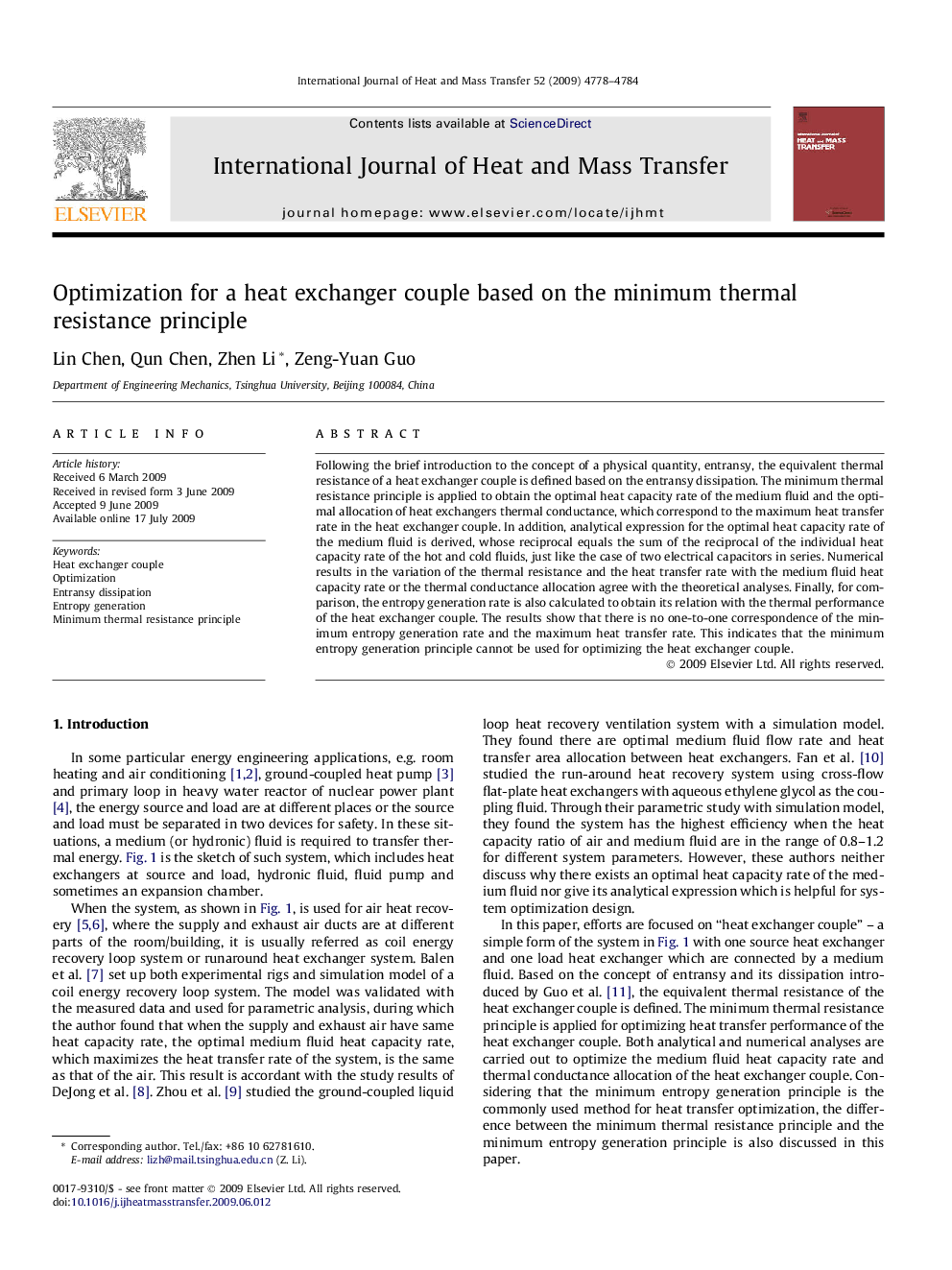| Article ID | Journal | Published Year | Pages | File Type |
|---|---|---|---|---|
| 661396 | International Journal of Heat and Mass Transfer | 2009 | 7 Pages |
Following the brief introduction to the concept of a physical quantity, entransy, the equivalent thermal resistance of a heat exchanger couple is defined based on the entransy dissipation. The minimum thermal resistance principle is applied to obtain the optimal heat capacity rate of the medium fluid and the optimal allocation of heat exchangers thermal conductance, which correspond to the maximum heat transfer rate in the heat exchanger couple. In addition, analytical expression for the optimal heat capacity rate of the medium fluid is derived, whose reciprocal equals the sum of the reciprocal of the individual heat capacity rate of the hot and cold fluids, just like the case of two electrical capacitors in series. Numerical results in the variation of the thermal resistance and the heat transfer rate with the medium fluid heat capacity rate or the thermal conductance allocation agree with the theoretical analyses. Finally, for comparison, the entropy generation rate is also calculated to obtain its relation with the thermal performance of the heat exchanger couple. The results show that there is no one-to-one correspondence of the minimum entropy generation rate and the maximum heat transfer rate. This indicates that the minimum entropy generation principle cannot be used for optimizing the heat exchanger couple.
